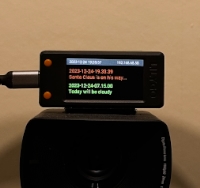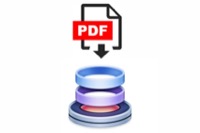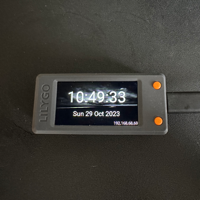 Scroll the menu to find all the places to visit
Scroll the menu to find all the places to visit© ThoughtAsylum.com 2024. All rights reserved.

26 Apr 2024
All of my jobs have involved me communicating information to people during presentations, and during the last decade I have regularly found myself building out non-linear slide decks in Microsoft PowerPoint. These are slide decks that bring together multiple sets of small ‘micro’ presentations on a very narrow and specific topic. I can then use the slide deck to cover any of these topics in any order via a ‘switch board’ slide that simply lets me jump out to these presentations in any order I choose.
I have found this type of deck invaluable for workshops, training sessions, and ad hoc meetings. Being able to jump around seamlessly makes things easier for me and looks slick and professional too. In this post I am going to set out my approach in setting up this sort of slide deck.
Read More
31 Mar 2024
This past month I attended my first conference of the year. It was actually a forum of several hundred people, but I have a couple of other similar events coming up. A two day exhibition at the London Expo this coming month and an SAP HR event in May. At this first event all of the non-networking events were taking place in a single large room and I just captured everything on my phone and my work laptop. The next events however are going to be bigger venues with multiple locations for sessions, and even though my laptop is pretty light I’d like to travel lighter still. Dumping the laptop, spare USB C battery pack & cable and replacing them with my iPad and a keyboard (but keeping my iPhone) would be better.
To that end I set about coming up with a new workflow for capturing information at conferences.
Read More
29 Feb 2024
Recently, while working on a new Alfred workflow, I found myself once again wishing that Alfred workflows supported subroutines or functions. Something that would give me better reuse of chunks of my workflow so I could keep things as a single source. For the most part I rely on using a single script for this kind of work, but sometimes a script alone isn’t the best way to do it, rather multiple workflow steps would provide a better result. After thinking it through and tinkering, I came up with a solution that worked and I have since put into practice. A kind of pseudo-function approach if you will.
Read More
30 Jan 2024
This post is, in a sense, a natural follow up to my Path-based Commands in Obsidian post from around this time last year. In that post I demonstrated how you could trigger command line tools from within Obsidian using the Templater plugin. In this post I’m flipping that around, and rather than going external, I am focusing on the internal. The text within an Obsidian note. However, rather than adding new content, I am going to tell you a little about how I am also using Templater to convert existing content, transforming it in a variety of ways to effectively build my own text processing functionality within Obsidian.
Read More
23 Jan 2024
Do you ever find yourself needing to visit web pages that are no longer available? I seem to go through phases of this, and being able to reference back to an archived copy is very useful. There are a number of services and approaches where you can archive your own copies of web pages, but that does not help when it is a site you never visited before and so did not have a chance to archive a copy for your own use.
Enter the Internet Archive’s “Wayback Machine”, and I have a little Keyboard Maestro macro to make it a little easier to use of it.
Read More
28 Dec 2023
A few months ago I wrote a post about my tiny Home Assistant powered desk clock, and in that I mentioned that while it would be possible to have little notifications pop up on it, I actually had a separate set up for that. In this post I am going to cover the details of my set up for this additional display, including the details of how to configure both the device and Home Assistant aspects, and also setting out some use cases.
Read More
07 Dec 2023
Recently I was exporting some web pages in PDF format. It was a simple enough task, and I was making use of the PDF option in the macOS standard print dialog window. The thing was I kept generating them, dragging them off into Dropzone (a shelf app with a plugin architecture for processing files) while I sorted and gathered, and then I dragged each off where it needed to go; a variety of folders and e-mails. Really what I would have liked to do was to simplify that middle step of saving the PDF somewhere and then dragging it into Dropzone for easy access. I had a bit of time to work on something today, and so I created a little workflow to just reduce that friction a little bit.
Read More
30 Nov 2023
There is a wonderfully powerful utility app on the app called TextSoap that has been around on the Mac long before I ever really started using Macs. Its premise is simple - it cleans up text; but its power is huge. The app is really approachable and allows non-programmers to build sophisticated processes for not just “cleaning” text up, but for transforming it in any number of ways. If you aren’t a Unix nerd who was sed tattooed on their left knuckles, awk on their right and has either vi or emacs emblazoned on their chest, then TextSoap might be the text processing utility for you.
For small, frequent jobs, I will be honest and say I usually just default to the built-in functions of my text editors (or Drafts), or a bit of regular expression manipulation. But for the more involved multi-step things, I turn to TextSoap, and in this post I’m going to share a tip for using lists in TextSoap.
Read More
29 Nov 2023
I’ve been using an Apple Watch for several years now, and currently own a series 4. I’m not big into tracking my fitness, or hiking the back woods, but I do benefit from being able to get key notifications on my wrist and from being able to capture thoughts and notes on the go. Earlier this year, or maybe late last year, my watch succumbed to what looks to be a surprisingly common issue whereby the watch runs out of space. Not because I have hundreds of apps or thousands of songs, but because of an excessive amount of utilisation of storage space by content my iPhone Watch app classifies simply as “other”. While I fixed that previously, it happened again and the fix was a different one, so in this post I’m going to cover what I’ve done so that anyone else lost down this ‘other storage’ blind alley might find their way out a little bit quicker than I did.
Read More
29 Oct 2023
Like many people, my day job involves a PC. A PC that is relatively locked down in terms of what I can and cannot do to it. One of the things I miss from having more access is the option to set the clock in the Windows Taskbar to show the time including seconds - a registry setting can enable this. This may sound odd, but given 30 seconds I can nip out of my home office and grab a cold drink for example; I find knowing where in a minute I am when I am due in a call to be really useful as I detest being late.
This situation was recently compounded by a problem I’ve been having with my system clock slipping out of time. I can correct it at the BIOS, but my NTP access for automatically setting appears to be linked to another issue my laptop has been experiencing. The solution is simple - I just needed a little physical clock for my desk I could pop next to my Taskbar. I could not find any that I liked, so I decided it would be a nice little project to create one and maybe add a few features.
Read More